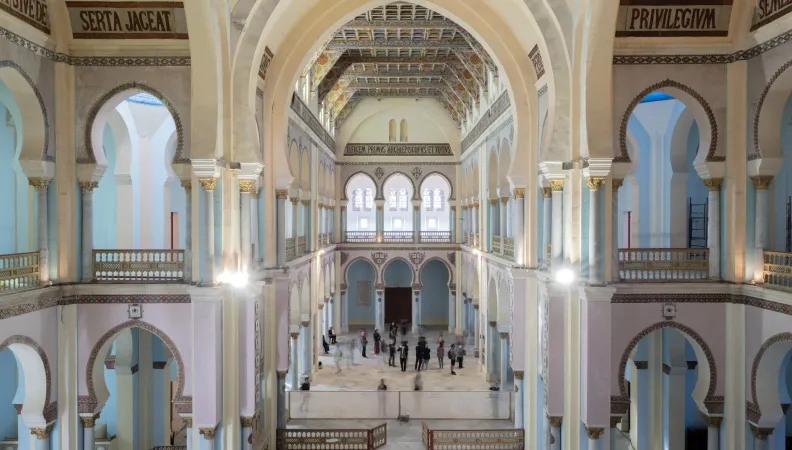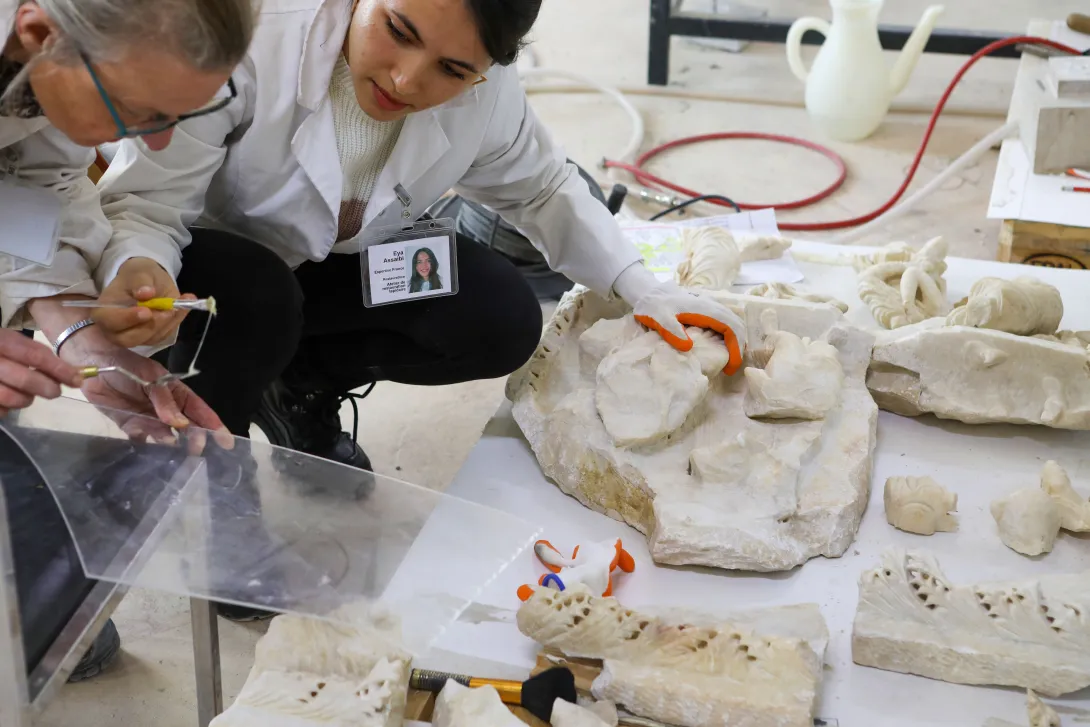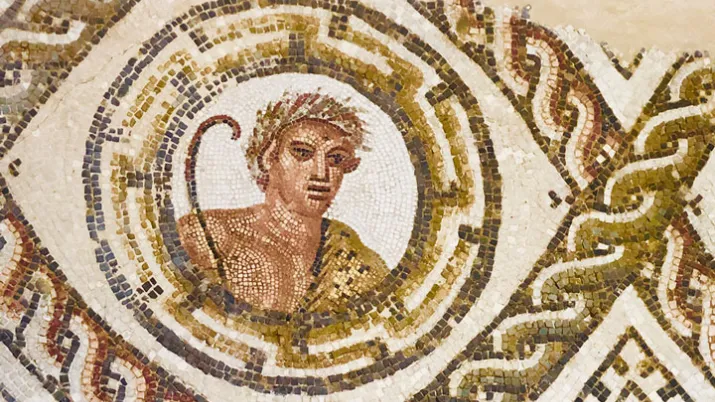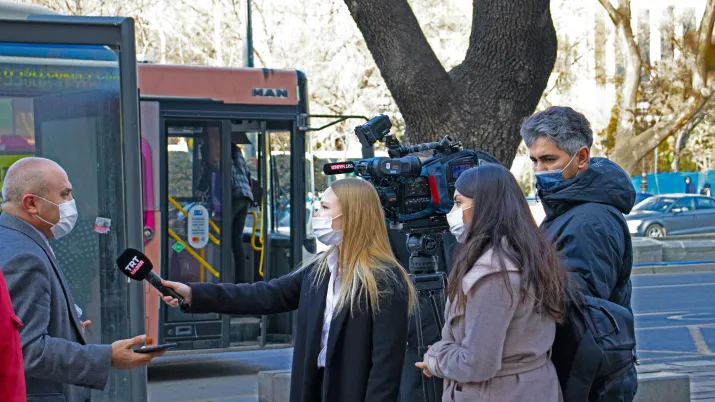Share the page
Patrimoine 3ooo: Promoting emblematic Mediterranean heritage sites
Published on

Led by Expertise France and its Tunisian partners, the European Patrimoine 3000 project aims to restore and promote several historical sites in Tunisia, with a view to developing the potential for cultural tourism. From the upcoming re-opening of Saint Louis Cathedral in Carthage to the restoration of the Casino of Hammam Lif and the cinema in Djerba, the project is implementing an innovative strategy to conserve and reuse heritage.
Launched with European Union financing under the Tounes Wijhetouna programme, the Patrimoine 3000 programme is assisting the Tunisian authorities with the restoration and promotion of architectural heritage. It is based on two components: the restoration of Carthage National Museum and the conservation of emblematic sites, by establishing an innovative management framework through cultural and tourism concessions.
The restoration of nearly 25% of the archaeological collection that will be exhibited in the museum, including the conservation of the most treasured exhibits at Carthage, “the Victories”, and the safeguarding of the Cathedral in Carthage, mark an important stage in the heritage project. At the same time, the studies on the conversion of the Casino of Hammam Lif and the cinema in Djerba illustrate a new way of linking heritage, contemporary creation, and local development.
In addition, there is a prospect of cooperation between the Mediterranean mission of the City of Marseille, Agence Française de Développement, the European Union, the Instance Générale de Partenariat Public-Privé, the Ministry of Employment and Vocational Training, the Ministry of Cultural Affairs and the Municipality of Carthage for the creation of a Mediterranean heritage campus in the former Saint Louis Cathedral. This ambitious project is already supported by the French Ministry for Europe and Foreign Affairs.

Restoration of Saint Louis Cathedral in Carthage and the Victories
The former Saint Louis Cathedral in Carthage, built between 1884 and 1890 on Byrsa Hill, is a symbol of Tunisian heritage and Mediterranean multiculturalism. Its neo-Moorish architecture, the result of the work of Syrian, Italian, Maltese and French craftsmen, bears witness to the richness of cultural exchanges in the region. The building, which was deconsecrated in 1964, brings together various construction techniques from the Mediterranean region: ceilings painted by artists from Venice and Aleppo, stones imported from Malta, stained glass windows created by a French master glassmaker. The cathedral was once a place of worship and now serves as a cultural and heritage centre. It has been adapted to the needs of each era and is now a landmark in Tunisia’s cultural life due to its spatial and acoustic qualities, hosting diverse exhibitions, concerts and shows.
However, the building has suffered from a lack of maintenance, compromising its architectural integrity and its capacity to receive the public. The recent technical studies have revealed important structural weaknesses. Despite these challenges, the cathedral has demonstrated its strong cultural and tourism potential, attracting more than 150,000 visitors in less than a year when it partially reopened in March 2024. Through its strategic position in Greater Tunis, it can serve for multiple uses, between public visits and a heritage training centre, meaning it offers considerable economic and social potential.
The experts deployed under the programme have enabled studies to be conducted and restoration works to begin. The first visible progress includes the restoration of part of the collection of mosaics and lapidaries, including the Victories, two monumental stone statues whose plaster coverings have been removed. This project has created six jobs for young people in conservation, restoration and collection management.
Cultural concessions: Reviving the Casino of Hammam Lif and the cinema in Djerba
The second component of Patrimoine 3000 involves an experimental system for cultural concessions. It currently concerns two emblematic buildings: the Casino of Hammam Lif, in the southern suburbs of Tunis, and the cinema in Djerba. The objective is to restore these abandoned sites and give them a contemporary function, in partnership with private operators.
Opened in 1894, the Casino of Hammam Lif is a jewel of the neo-Moorish style, an architectural movement also referred to as Arabised architecture. This style, which was very popular in Maghreb countries at the end of the 19th century, combines Arab-Muslim features and European principles, illustrating a hybrid aesthetic between local tradition and modernity. The building is located on the seafront, in the heart of a spa town that has been renowned since ancient times. It used to host balls, banquets and high-society events. A listed building since 2000, a study is currently underway for its refurbishment and conversion into a cultural and tourism centre. The same work is being carried out on the former cinema in Djerba, which is another iconic building and will be turned into a venue for arts programming, rooted in the community.
A Mediterranean Heritage Campus in Carthage, with the City of Marseille and AFD
In the longer term, Patrimoine 3000 is paving the way for strategic cooperation for the creation of a regional institute for heritage training, research and creation in the former Saint Louis Cathedral in Carthage.
In June 2025, a project was selected under the Patrimoine 2025 Call for Projects, with co-financing from the French Ministry for Europe and Foreign Affairs. It is jointly led by the Mediterranean mission of the City of Marseille, the Ecole d’Avignon, actors from La Citadelle de Marseille (ACTA VISTA and Bao formation), Expertise France, Agence Française de Développement, the European Union, the Instance Tunisienne du Partenariat Public-Privé, the Ministry of Employment and Vocational Training, the Ministry of Cultural Affairs and the Municipality of Carthage.
More info on Patrimoine 3ooo
Patrimoine 3ooo: developing cultural heritage in Tunisia
Funded by the European Union, this project to Support the Development of Cultural Heritage is part of the Tounes Wijhetouna (“Tunisia: Our Destination”) programme which aims to diversify Tunisia's cul...
- When ?
-
2019 - 2027
Status
Ongoing
- Location
- Tunisia
- Funders
- European Union
- Financing amount
- 19m €
On the same topic
Building a “Shared Horizon” for youth in the Balkans and countering misinformation
Published on September 29 2025
Innovative projects to strengthen the partnership with the European neighbourhood
Published on April 28 2025




